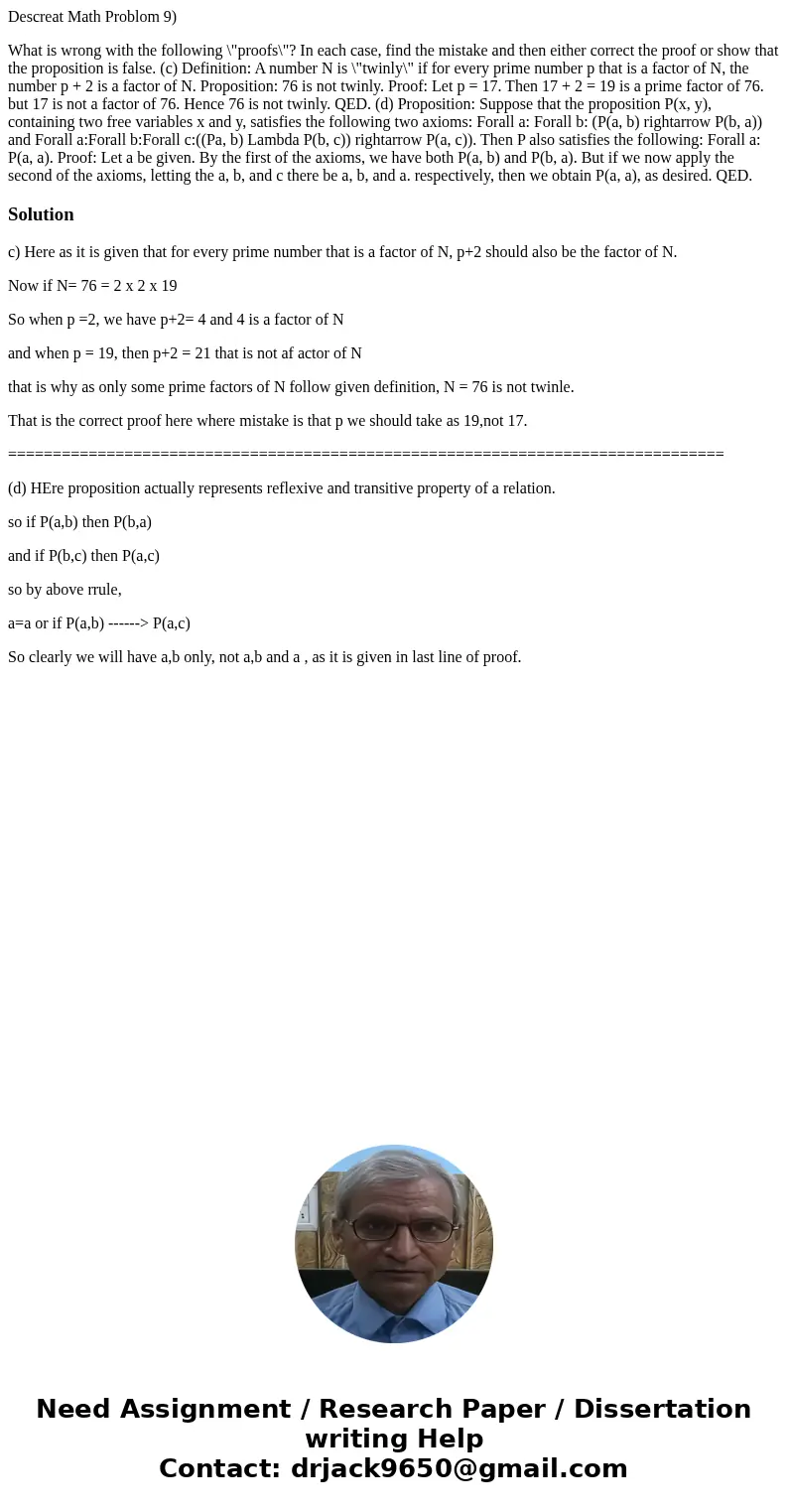Descreat Math Problom 9 What is wrong with the following pro
Descreat Math Problom 9)
What is wrong with the following \"proofs\"? In each case, find the mistake and then either correct the proof or show that the proposition is false. (c) Definition: A number N is \"twinly\" if for every prime number p that is a factor of N, the number p + 2 is a factor of N. Proposition: 76 is not twinly. Proof: Let p = 17. Then 17 + 2 = 19 is a prime factor of 76. but 17 is not a factor of 76. Hence 76 is not twinly. QED. (d) Proposition: Suppose that the proposition P(x, y), containing two free variables x and y, satisfies the following two axioms: Forall a: Forall b: (P(a, b) rightarrow P(b, a)) and Forall a:Forall b:Forall c:((Pa, b) Lambda P(b, c)) rightarrow P(a, c)). Then P also satisfies the following: Forall a: P(a, a). Proof: Let a be given. By the first of the axioms, we have both P(a, b) and P(b, a). But if we now apply the second of the axioms, letting the a, b, and c there be a, b, and a. respectively, then we obtain P(a, a), as desired. QED.Solution
c) Here as it is given that for every prime number that is a factor of N, p+2 should also be the factor of N.
Now if N= 76 = 2 x 2 x 19
So when p =2, we have p+2= 4 and 4 is a factor of N
and when p = 19, then p+2 = 21 that is not af actor of N
that is why as only some prime factors of N follow given definition, N = 76 is not twinle.
That is the correct proof here where mistake is that p we should take as 19,not 17.
================================================================================
(d) HEre proposition actually represents reflexive and transitive property of a relation.
so if P(a,b) then P(b,a)
and if P(b,c) then P(a,c)
so by above rrule,
a=a or if P(a,b) ------> P(a,c)
So clearly we will have a,b only, not a,b and a , as it is given in last line of proof.

 Homework Sourse
Homework Sourse